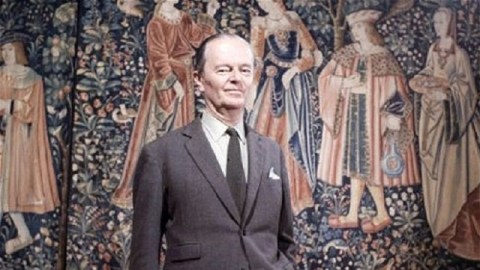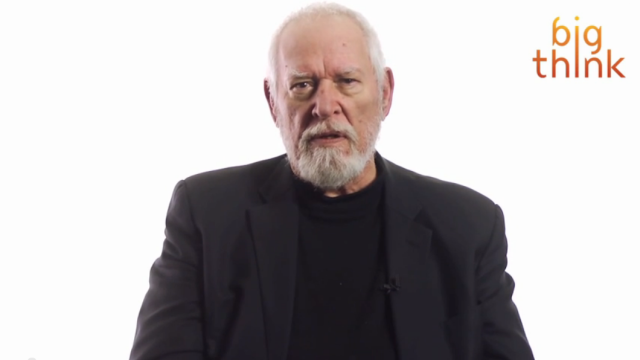An Art Exhibition About an Art Critic?

Nobody goes to a baseball game to watch the umpires, so why would someone go to a museum to see an exhibition dedicated to an art critic—one of those arbiters of taste who hopes to mediate but sometimes only muddles the interaction between artists and the public? England’s Tate Britain bets that the British public will come to watch the umpire in their new exhibition Kenneth Clark: Looking for Civilisation. Not just your average umpire, Sir Kenneth Clark (shown above) ruled over art criticism for decades, stretching from his becoming Director of the British National Gallery in 1933 at just 30 years of age all the way to his crowning achievement with the 13-part documentary Civilisation: A Personal View by Kenneth Clark in 1969. Although the main focus of the show is on Clark’s work in the 1930s and 1940s, by having the show’s title hark back to his highly personal broadcast of what was civilization and art, it raises the larger question of how this public servant served the public for well-intentioned good and possibly ill, as any critic can.
Kenneth Clark: Looking for Civilisation includes screens playing clips from Civilisation as well as rarer clips from the late 1950s and earlier 1960s, when television was essentially in its infancy and arts television was finding its place. As you listen to Clark’s crisp, patrician voice cast down judgments from his personal Mount Olympus, you walk among 200 objects from Clark’s personal collection, which creates a kind of cause and effect—here he is telling you what’s civilization and here he is showing you. The two main themes that run through Clark’s collection and the show itself are Clark’s two main visions of civilization itself: the Old (and not as Old) Masters such as Leonardo da Vinci, John Constable, Edgar Degas, and Paul Cézanne who build up the tradition and the Modern British Masters such as Henry Moore and Graham Sutherland who kept the tradition alive in the face of fascism and other threats to civilization.
Born into a wealthy family, Clark from his youth used his wealth to buy art, to support struggling artists financially, and to commission art. He also used his growing influence to get museums to buy these artists’ works for their collections. Clark viewed himself as part of the long line of art patrons reaching back to the Renaissance that was slowly slipping away and, as a result, breaking the bond between the artist and society, thus making art more solipsistic and solitary and, therefore, useless to society. Clark’s taste for representational, tradition-rooted art (even when it turned to modern methods) reflected his belief that art was a life or death reality for society—lose art and you lose civilization. The outbreak of World War II in 1939 solidified Clark’s faith in art as salvation as Britain and the Nazis locked in a clash of civilizations where only one could survive. Clark’s private patronage became a public project with the War Artists’ Advisory Committee, which resulted in 5,570 works of art produced by over 400 artists (including the aforementioned Moore and Sutherland) documenting Britain in its “finest hour.” If art ever had a true believer, it was Clark.
Clark continued to evangelize for art after the war, even when the postwar world was changing around him. As Clark continued to act as the great popularizer of the Western tradition of art and to extol its civilizing charms, critics from that new world took aim at him. In particular, Marxist critic John Berger called Clark out by name in Ways of Seeing for failing to see the flaws of the Western tradition and how blind adherence to that tradition continued to exclude non-Western traditions as well as women and minorities. For many, Clark stood as the unapologetic voice of the establishment against which feminism, multiculturalism, and all the new “isms” stormed.
But was Clark really an unapologetic voice? If you watch the last ten minutes of the final episode of Civilisation, you might change your mind. We take for granted today the Ken Burns or Simon Schama-ish, long-form, multi-episode TV documentary, but Civilisation really broke new ground as one of the first color documentaries as well as one of the first on location series that didn’t just talk about Michelangelo’s Sistine Chapel ceiling but actually “took” you there, thus opening up whole new worlds for those who couldn’t afford such travels. Civilisation (which helped put not just England’s BBC Two, but also America’s PBS, on the map) set the standard to which later educational series such as Jacob Bronowski’s The Ascent of Man (1973), David Attenborough’s Life on Earth (1979), and pretty much everything that followed aspired. Yet, for all that traversing of the landscape of civilization, Clark brings it home by bringing the story back to his home, specifically his library and study.
Against the background of that study, Clark admits freely to his status as “a stick in the mud.” He knows that the times might be changing and that his “personal view” might be too Western, too male, and too white, but he adds that he made his choices based on preferences for order over chaos, creation over destruction, and gentleness over violence. For Clark, the ideological battle behind World War II never ended. “Advanced thinkers, who even in Roman times thought it fine to gang up with the barbarians, have begun to question whether civilization is indeed worth preserving,” Clark says. “It is lack of confidence, more than anything else, that kills a civilisation. We can destroy ourselves by cynicism and disillusion just as effectively as by bombs.” Clark wasn’t blind to art beyond the Western canon—he collected prints by Hokusai and art from Tang Dynasty China. Clark, however, believed that there was something in art, regardless of its origin, that holds civilizations together. Clark spent his life reminding people that no matter how different people are or how the world changes, there will always be some core values most beautifully expressed in art that we should cling to as a life preserver against a sea of troubles and the whirlpools of anarchy that threaten to pull us down. All the “isms” are correctives to the flaws of personal, outdated visions such as Clark’s, but those correctives should never be allowed to pull the whole house down.
If you painted a portrait of me as a young nerd, I’d most likely be reading the musty old hardback copy of Civilisation or watching the fuzzy VHS of the series from my local library. One of the first art books I read twice was Clark’s The Nude, which I loved not just for its ideas but even more for the beauty of its prose. “Timeless” is a dangerous word—one that makes “isms” reach for their critical theories—but just as Clark saw a timeless value in art, he also explained that value in a timeless way that some might see as archaic while others might judge as classic. Kenneth Clark: Looking for Civilisation will divide opinion, but it will certainly start a public conversation, something Clark himself would have heartily approved of. It’s another baseball adage that the best umpires are the ones you never notice, the ones who call the game without unfairly influencing the outcome. Unlike that perfect umpire, Clark couldn’t hide and achieve what he did, but I never felt that he did less than call them as he saw them. An art exhibition about an art critic seems as problematic as a baseball game played to showcase an umpire, but maybe we need the occasional reminder that there’s a need for an umpire, a need for an art critic not to tip the scales of opinion unfairly, but to remind us that order and common core beliefs are why we play the game.
[Many thanks to Tate Britain, London, UK, for providing me with press materials related to their exhibition Kenneth Clark: Looking for Civilisation, which runs through August 10, 2014.]





